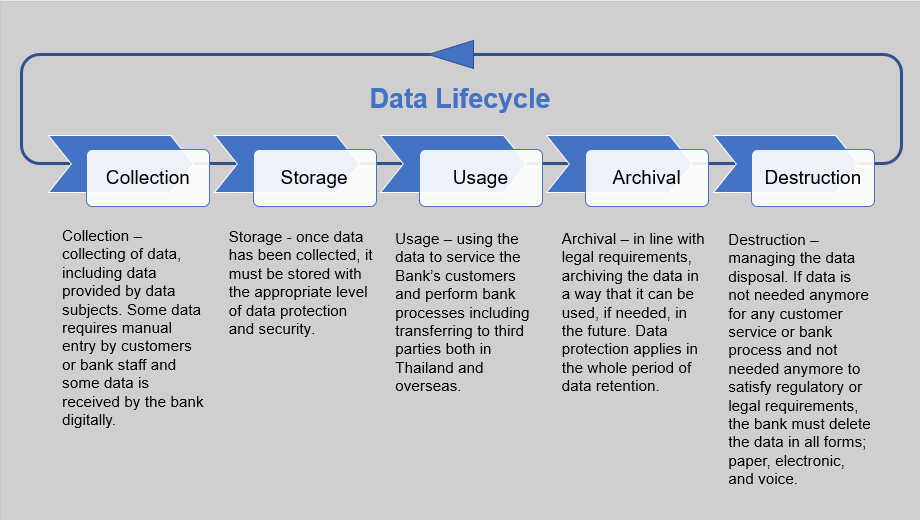Essential Cyber Security Practices for Effective Data Destruction Methods
Wiki Article
Checking Out the Relevance of Information Damage in the Context of Computer System Security Providers and Protecting Confidential Data
In an age where information breaches are significantly common, the significance of effective information devastation can not be overstated. What techniques can organizations implement to improve their data devastation protocols?Recognizing Information Devastation
Information damage is a critical part of computer system safety that entails the irreversible elimination of information from storage space tools to avoid unauthorized accessibility and prospective information breaches. In a significantly digital landscape, organizations encounter increased risks connected with sensitive details being improperly accessed or made use of. Efficient data damage safeguards versus these risks, making sure that confidential dataâEUR" such as consumer details, intellectual property, and monetary recordsâEUR" can not be recouped after disposal.Recognizing the importance of information devastation prolongs beyond mere compliance with regulative and legal structures; it is vital for maintaining business honesty and trust. When information is poorly handled or improperly damaged, the effects can be extreme, including economic loss, reputational damage, and legal responsibilities.

Methods of Information Obliteration

One prevalent approach is data cleaning, which entails overwriting existing data with arbitrary patterns multiple times. This strategy makes the initial information irretrievable, making it a prominent selection for organizations seeking to protect secret information.
An additional technique is degaussing, which makes use of an effective electromagnetic field to interrupt the magnetic domains on storage space devices, successfully getting rid of the data. This strategy is particularly effective for magnetic media however is not appropriate to solid-state drives.
Physical damage is an additional durable approach, entailing the shredding or squashing of storage gadgets. This approach warranties that information healing is essentially impossible, making it optimal for highly delicate info.
Last but not least, security can function as a complementary strategy to data removal. By encrypting data before removal, companies can include an additional layer of security, ensuring that even if residues are recovered, they stay unattainable without the decryption key. Each approach needs to be picked based on the degree of information sensitivity and the details safety and security demands of the organization.
Legal Compliance and Information Safety And Security
Organizations must browse a complicated landscape of lawful needs related to information security, particularly after executing methods of data removal. Different guidelines, such as the General Data Security Policy (GDPR) and the Medical Insurance Portability and Responsibility Act (HIPAA), impose rigorous guidelines on just how organizations should handle and dispose of sensitive data. Failing to comply with these guidelines can result in substantial lawful effects, including substantial penalties and reputational damages.Information damage processes must be carefully documented to show conformity with applicable legislations and requirements. This documents not just acts as proof of adherence to lawful commitments yet additionally shows a dedication to protecting sensitive information. Organizations must likewise establish clear policies relating to information retention and damage timelines, guaranteeing that data is not held longer than necessary.

Furthermore, normal audits and assessments of data destruction methods are important to keep conformity and adjust to advancing lawful structures (data destruction). By proactively addressing legal demands, organizations can mitigate threats associated with information violations and show their dedication to data security. Inevitably, focusing on lawful conformity in information destruction processes is not simply a governing responsibility, yet an essential facet of a robust data safety and security strategy
Influence On Organization Reputation
The track record of a service can be substantially affected by its method to data damage and administration. In today's digital landscape, where data breaches can happen at any type of moment, the failure to appropriately get rid of delicate details can result in extreme effects. Organizations that inadequately manage data devastation danger exposing confidential client details, which not only breaches privacy legislations but likewise wears down depend on among stakeholders and customers.A damaged online reputation can result in reduced client loyalty, as customers end up being hesitant to engage with an organization that has demonstrated carelessness in safeguarding their information. Unfavorable promotion bordering an information breach can have a long lasting effect, as prospective customers may be deterred by the viewed absence of security. This can cause a direct decline in revenue and market share.
Furthermore, companies that focus on data damage as component of their security technique can enhance their track record by showcasing their commitment to securing sensitive info. By adopting rigid data management techniques, companies can not only reduce threats however my website additionally position themselves as reliable entities in their particular sectors, consequently strengthening their general brand name photo.

Ideal Practices for Secure Disposal
Executing best methods for safe and secure disposal of information is vital for minimizing dangers connected with information breaches and ensuring compliance with privacy laws. Organizations must take on a comprehensive this contact form data disposal plan that lays out procedures for both electronic and physical information damage.For physical information storage devices, such as tough drives, shredding or degaussing is advised to avoid information recovery. Furthermore, companies ought to maintain a chain of safekeeping paperwork throughout the disposal procedure, making sure responsibility and traceability of disposed products.
For electronic data, making use of software program that adheres to market requirements for data wiping is vital. This software program ought to overwrite existing data numerous times, making recovery basically difficult. It is additionally vital to verify the performance of the data destruction process via audits or third-party analyses.
Training staff members on secure disposal practices adds an additional layer of security, as human error can frequently result in information direct exposure. Consistently updating and evaluating disposal plans ensures placement with developing laws and technological advancements. By carrying out these best methods, organizations can considerably decrease the risk of unauthorized information gain access to and improve their overall data security technique.
Final Thought
In conclusion, data damage is an essential aspect of computer security solutions that makes certain the defense of secret information from unapproved gain access to. Executing reliable techniques of data obliteration, adhering to lawful conformity, and acknowledging the effect on service track record are important elements of a thorough data security technique. By embracing best practices for protected disposal, organizations can cultivate count on with customers and protect sensitive data, ultimately adding to a more secure electronic landscape.In an age where information breaches are increasingly resource usual, the relevance of efficient information damage can not be overemphasized.Information devastation is an essential component of computer protection that includes the irreversible removal of information from storage tools to prevent unapproved gain access to and potential information breaches. Organizations needs to likewise develop clear plans pertaining to data retention and destruction timelines, making certain that information is not held longer than essential.
By proactively resolving legal demands, organizations can minimize dangers connected with information violations and demonstrate their commitment to information protection (data destruction). Inevitably, focusing on legal conformity in data destruction procedures is not just a regulative commitment, but a basic facet of a durable information safety technique
Report this wiki page